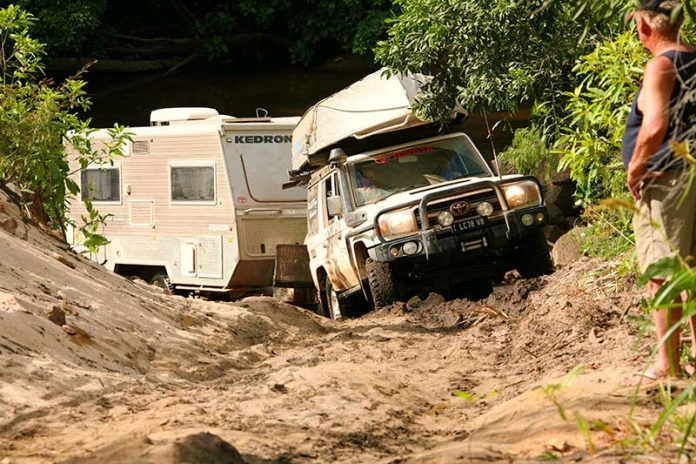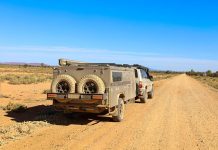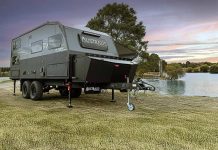Your 4WD suspension design can make a difference to how well it tows, and how much it can tow. Of course, there are many other factors in the mix for good towing stability, such as how the suspension is tuned, and the dimensions of the vehicle itself, not to mention how well the caravan is designed and how its load is placed for stability.
But if a tow vehicle has the suspension design basics well covered, that’s a good start.
MAIN 4WD SUSPENSION TYPES
There are exceptions to the rule but, generally speaking, 4WD suspension comes in a leaf-spring or coil-spring live axle design, or coil-spring independent suspension.
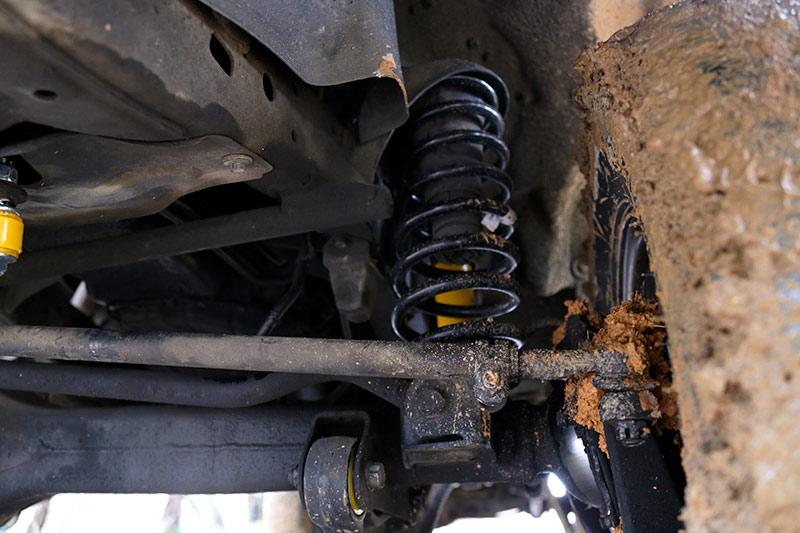
There are two basic parts of a suspension system: the springs, and the components they attach to – either independent suspension arms or a live axle, which in turn attach to the wheels. Of course, dampers (or shock absorbers) are part of any suspension system, too.
LEAF SPRINGS
Leaf springs are a very simple suspension type that, in principle, has been used since the horse and cart days. They are, effectively, curved strips of steel that are sandwiched and secured together by shackles. One spring typically has eyelets at each end so that the leaf pack can be secured to the chassis.
The number of leaves used depends on the weight the springs need to carry; most vehicles will have a leaf pack of three or four leaves each side.
Leaf springs are generally very good at carrying heavier loads. They can accommodate the additional loading in a 4WD, from kerb weight to GVM, without a drastic change in its ability to absorb bumps.
Leaf springs do suffer from some sag under load, but the extent of this is limited by the typical heavy-duty leaf pack. And a benefit of the rigid-axle design is, as the suspension is loaded, the wheels do not change their camber angle in relation to the road. This is a good thing when you have a heavy towball download pressing on the back of your tow vehicle for thousands of kilometres.
Leaf springs also behave like dampers, to a degree, because the friction between the leaves reduces the springs’ oscillating effect after hitting a bump.
Live axle leaf-spring set-ups tend to be stronger and therefore are generally rated to a higher axle mass than independent, coil-spring vehicles.
Rigid-axle leaf-spring suspension is simple to make and repair. Replacing a broken leaf is easy (you can even weld a broken one for a temporary bush repair). There are few suspension bushes used and they, too, are simple to replace.
When driving offroad, a live axle can offer better articulation than an independent design, particularly a coil-spring live axle. While some argue it’s a moot point in these days of clever traction control systems, on a steep undulating track there is a benefit to stability of having all wheels on the ground, rather than one or two lifting in the air.
So the leaf-spring rigid-axle suspension is simple and strong for load carrying, and is cheap and easy to make and repair.
INDEPENDENT 4WD SUSPENSION
The independent suspension design is more sophisticated. The most common design (there are many variations) is two A-arms pivoting off the body or chassis with a wound coil-spring in between.
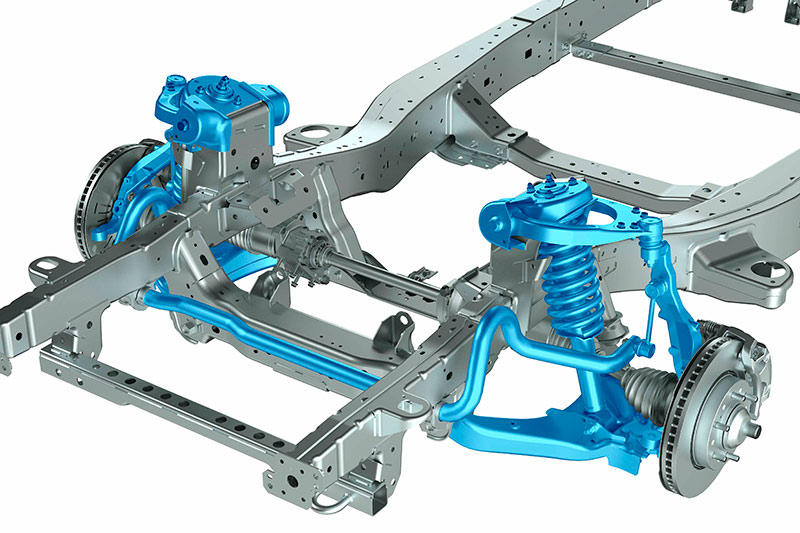
Any independent suspension, if well designed and tuned, will provide a much better ride than a live axle, because when a wheel hits a bump it absorbs it without transferring load to the opposite wheel, as happens on a rigid axle.
Independent suspensions can be good offroad, where they not only provide better ride quality but also can allow – in some circumstances – better underbody clearance without the imposition of the rigid axle.
However, this is not the case when the suspension compresses. The independent 4WD suspension in this situation allows the body to come closer to the ground, losing its advantage.
While a live-axle vehicle may too (in rare cases) have underbody components that come close to the ground under suspension compression, generally speaking a live-axle vehicle’s ground clearance is much more consistent. The live axle’s relationship to the ground is consistent no matter how much the suspension deflects (excepting a small amount of tyre compression).
As for 4WD suspension lifts, a coil spring A-arm suspension can be raised by adding longer springs, but it has its limitations. If you raise an independent suspension too much, it will have a negative impact on suspension geometry (and is also probably illegal). Government regulation is the driver for any suspension lift.
However, there is a thriving industry in making and certifying suspension lifts – just know that you will only gain perhaps 40mm of static ground clearance (generally speaking) with a lift.
Dampers, or shock absorbers as they are better known, are necessary for any vehicle suspensions; otherwise, the spring movement will not be adequately controlled. When your dampers are starting to fail or are not well tuned for the application, they will feel ‘bouncy’. Replacing dampers is a good idea if the vehicle does not settle after bumps.
INDEPENDENT SUSPENSION: PROS AND CONS
Independent suspension is often more expensive to make and to maintain than rigid axle leaf spring designs, and while a well-designed setup should have no problems, the dilemma is that in really bad offroad conditions, they are also more prone to damage, such as spring breakage. You cannot do a temporary weld repair to a coil spring like you can a leaf spring, and while you can limp into the next town with a broke leaf spring, a broken coil usually means you’re going nowhere.
But provided you have a heavy-duty coil-spring suspension and are careful, the independent design is still a better choice for heavy-duty offroad/rough-road towing.
There are few 4WD vehicles left that have live axles front and rear. The Jeep Wrangler and Gladiator, and Toyota LandCruiser 79 Series are the main examples.
Most one-tonne utes, such as the Ford Ranger and Toyota HiLux, have leaf springs/live axle at the rear only, in keeping with their heavy-duty load-carrying purpose.
While there are many factors involved in good towing dynamics, a well-sorted aftermarket suspension kit can improve any tow vehicle. It is costly (roughly $2000 to $3000), it is a good investment if you are doing lots of caravanning, in particular if you’ve got a heavily combination.


